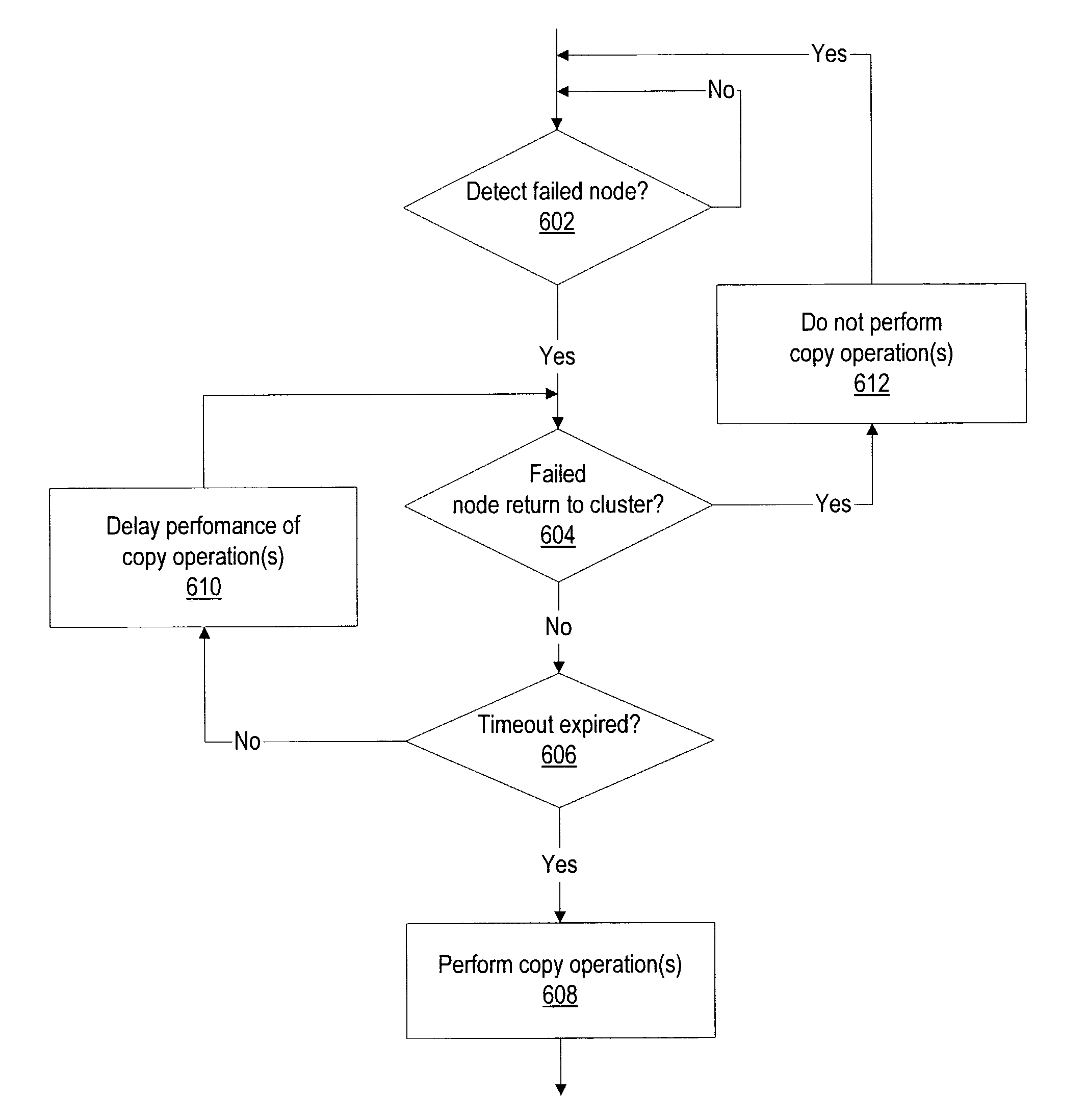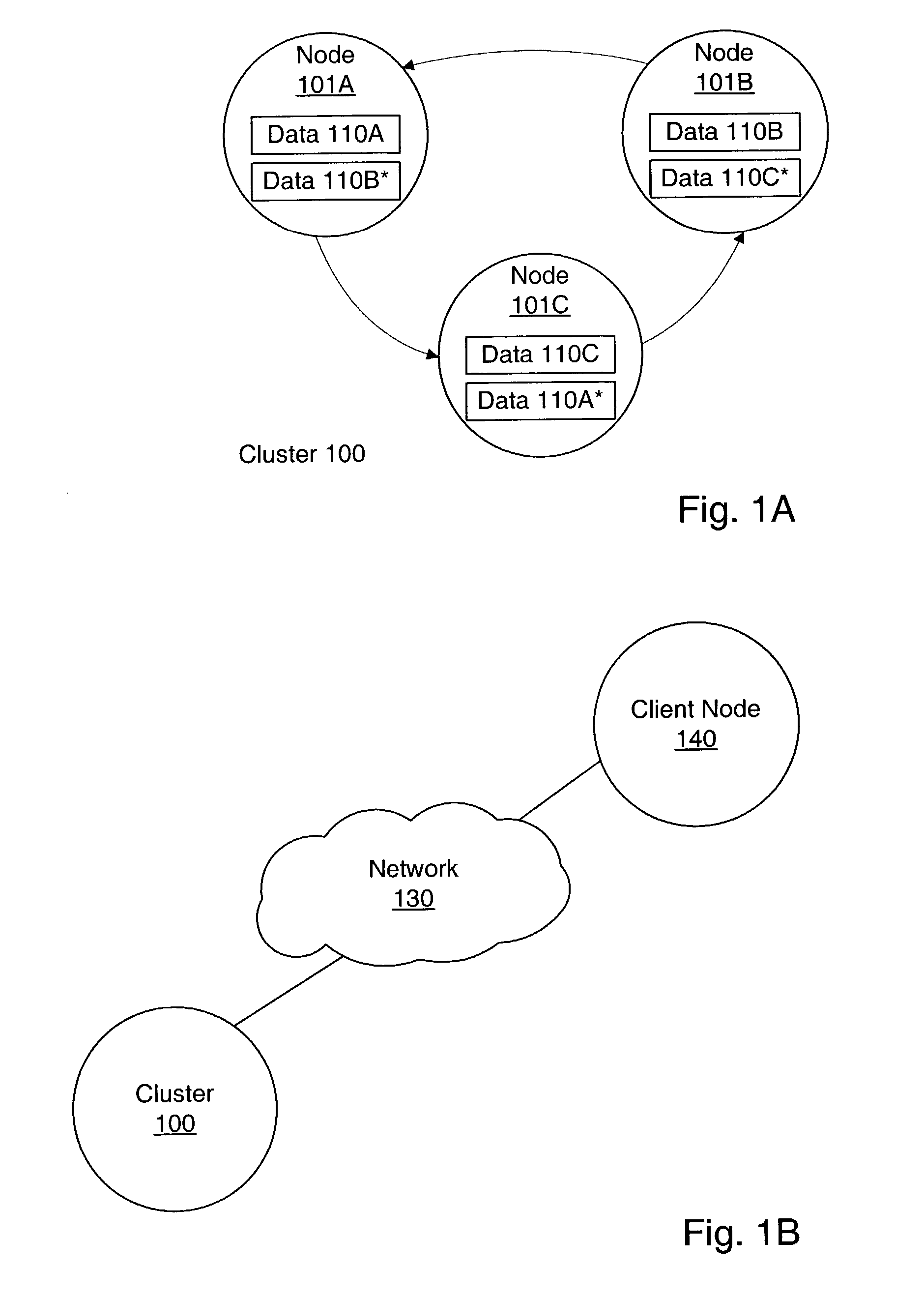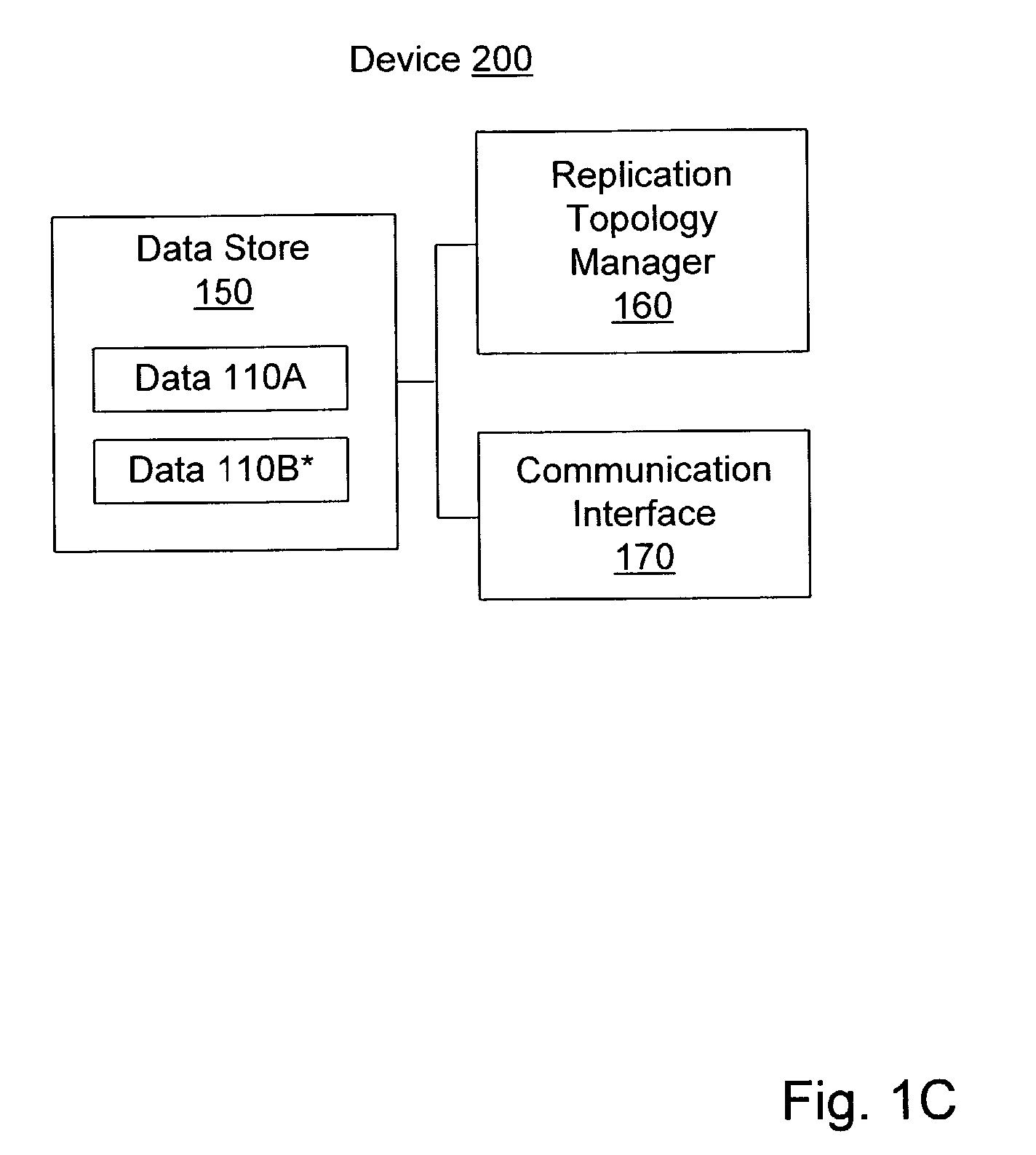System and method for reforming a distributed data system cluster after temporary node failures or restarts
a distributed data system and cluster technology, applied in the field of distributed data systems, can solve the problems of unfavorable data distribution, failure of nodes, and failure to return to the cluster relatively quickly, and achieve the effect of improving the reliability of the cluster
- Summary
- Abstract
- Description
- Claims
- Application Information
AI Technical Summary
Problems solved by technology
Method used
Image
Examples
Embodiment Construction
[0021]FIG. 1A illustrates one embodiment of a cluster 100 that includes nodes 101A–101C. Cluster 100 is an example of a distributed data system cluster in which data is replicated on several nodes. As used herein, a “node” may be a stand-alone computer, server, or other computing device, as well as a virtual machine, thread, process, or combination of such elements. A “cluster” is a group of nodes that provide high availability and / or other properties, such as load balancing, failover, and scalability. For example, replicating data within a cluster may lead to increased availability and failover with respect to a single node failure. Similarly, subsets of a cluster's data may be distributed among several nodes based on subset size and / or how often each subset of data is accessed, leading to more balanced load on each node. Furthermore, a cluster may support the dynamic addition and removal of nodes, leading to increased scalability.
[0022]Nodes 101A–101C may be interconnected by a ne...
PUM
 Login to View More
Login to View More Abstract
Description
Claims
Application Information
 Login to View More
Login to View More - R&D
- Intellectual Property
- Life Sciences
- Materials
- Tech Scout
- Unparalleled Data Quality
- Higher Quality Content
- 60% Fewer Hallucinations
Browse by: Latest US Patents, China's latest patents, Technical Efficacy Thesaurus, Application Domain, Technology Topic, Popular Technical Reports.
© 2025 PatSnap. All rights reserved.Legal|Privacy policy|Modern Slavery Act Transparency Statement|Sitemap|About US| Contact US: help@patsnap.com



